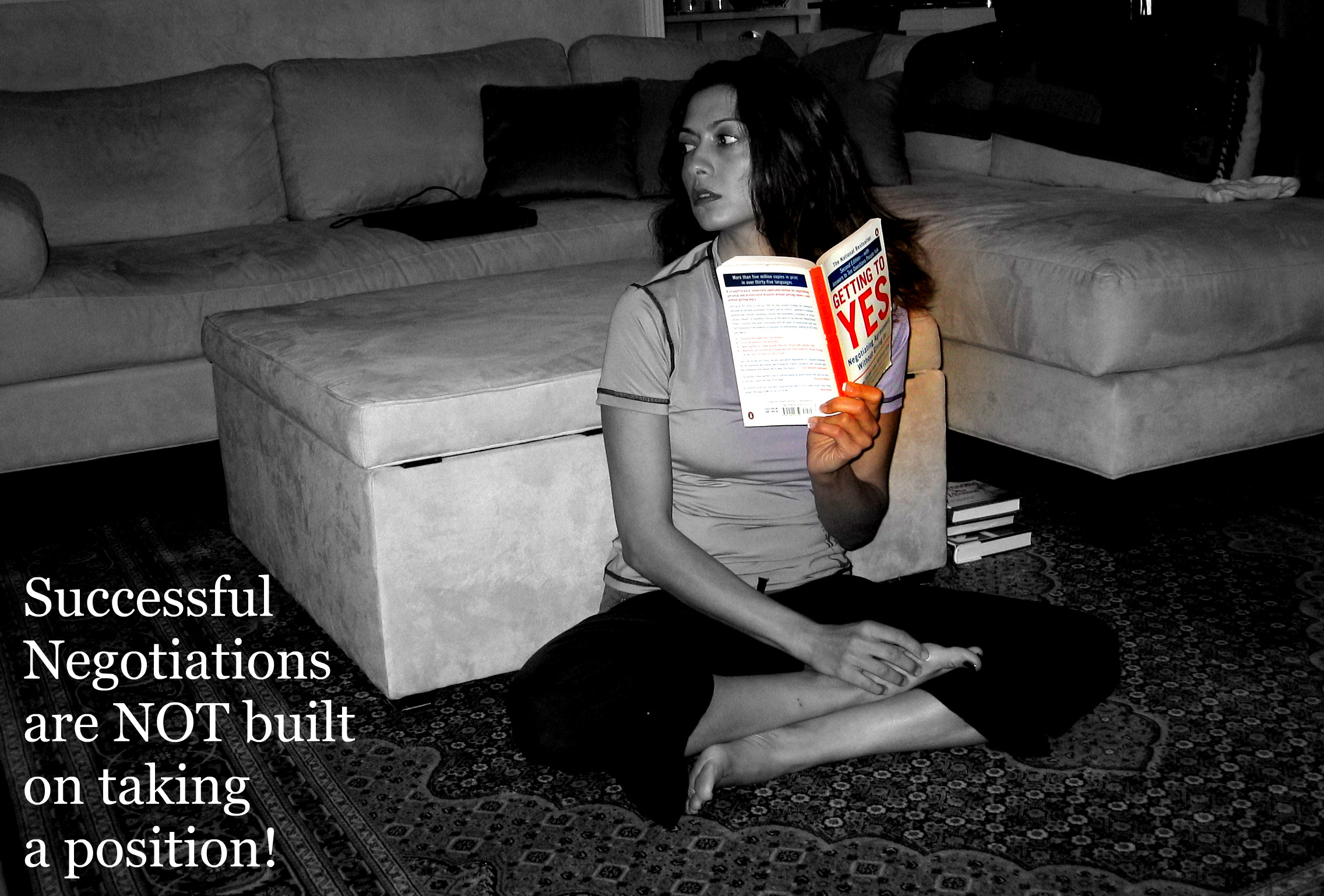“Getting to Yes“ is quite possibly one of the best negotiation books you will ever read. First published in 1981, the authors founded the first Negotiation Program at Harvard Law School and have been successfully teaching their negotiation technique globally. I enrolled in a one-day course at my company. The course teaches the fundamentals of the book. It was an excellent class taught by two lawyers. The instructors talked about Roger Fisher as the most prominent author of this book; he is well sought-after by corporations and institutions for arriving at the best results in the most difficult negotiations.

I believe the methods outlined in this book would work for any negotiation in life. The most difficult task is to remember and work through them at the negotiation table when emotions run high and self-interest rules the game.
You will be hard pressed to find a simpler, more practical, more sensible and change inspiring approach to negotiation and communication than the techniques of Fisher and Ury. The main principle is simple: “Do not bargain over positions. Bargain over interests.” Positional bargaining might serve us well in some instances, such as when haggling in a market over the price of goods. The techniques in this book are aimed at the type of negotiations in business and life where we have vested interest in the relationships of those we negotiate with.
Bargaining over positions will hardly gain the desirable outcome in any other situation. It can cause bitterness if we are too soft for not pursuing what we really wanted, and regret if we are too hard on the other side, for taking them for all we can. In response to whether we should be soft or hard, Fisher & Ury respond that you should be neither, and when you bargain over interests, you do not need to choose to become one or the other. The negotiation takes on a completely different angle. It will no longer be combative, and both parties will try to reach the right outcome.
The concept may be simple and logical, but it is easy to be skeptical because it is not easy to think about anything other than what we want in tough negotiations. I have used the techniques in this book on strangers, on colleagues and on my own spouse. I am shocked to see how it works, amused by how fun this can be, and impressed at having found a technique that sounds good in a book and also works well in life. Do yourself a huge favor and learn how to better negotiate in life. No matter where you live and what your circumstances, and with whom you daily or weekly cross paths, disagreements arise inevitably. Strong solid negotiating skills will set you apart, work in your favor, improve your relationships, and may even enhance your finances!
While I cannot say enough about this book, and while I think this is one of the few books where there are no wasted chapters, here are some highlights that may serve as a good reference if you should not get an opportunity to read it cover to cover:
The Method:
-Separate the People from the problem
-Focus on Interests, Not Positions
-Invent Options for Mutual Gain
-Insist on Using Objective Criteria
Reading is the best pastime for an active mind! If you like to see the other book reviews, check the index of In Print.
There are some great memorable phrases from this book – the writing is so unlike the average business book. In the “Perception” section on pg.22, “The difference exists because it exists in their thinking. Fears, even if ill-founded, are real fears to be dealt with. Hopes, even if unrealistic, may cause a war. Facts, even if established, may do nothing to solve the problem.”
The sections of the book covering good communication can be nothing new to most of us who have heard the basics on developing such skills- oh but how difficult it is to exercise them in the heat of the moment. For instance, how many of us actively listen: only listen and be not thinking of what you will say in response? How many of us check our understanding before flying into a rage for a misinterpreted intention? If the intent you gather from the opposing party is so shocking that it makes you angry, spare a few seconds to validate that understanding before any reaction you deem appropriate – and do try to give benefit of a doubt, always. There can only be gain from it.
Focusing on mutual gain takes up a good portion of the book, along with some great examples. Then comes the fun section titled “Yes but”. Yes but what if I am dealing with an idiot who will not budge. Yes but what if the other party plays tricks and is manipulative. Yes but what if no matter how hard I try to work on mutual gain, they will not yield to reason and continue to stand with their stubborn position.
Negotiation is a game two must play, right? Not exactly. While it is important to come to mutual agreement, you can certainly change the rules of the game, and most importantly, the assumptions the other party most likely holds from years of negotiating a certain way. Perhaps no one else has ever expressed interest in anything but positional negotiation. Your technique is one to raise eye brows and cause skepticism. No matter, forge ahead. This is the best way to negotiate. Thinking hard and deep about what the mutual interest of both parties is may completely change the question.
You learn about your BATNA in this book – the Best Alternative To a Negotiated Agreement. Sometimes, you want to go to your BATNA, because it is better than reaching an agreement. We do not always have a rosy outcome in life, and this book is written with reality in mind. Knowing and developing your BATNA will benefit you greatly. This is one where not knowing it could indeed hurt your success chances.
The examples of the book are great. While the concepts are not terribly abstract, the examples help materialize the concept even further. There is also a long Q&A section at the end of the book. Every page of this book is well-written and worthwhile.
The book is brilliant in how it breaks down our reality and presents it with a powerful clarity. Be sure to read the “Insecurity of an unknown BATNA” (pg.100). “One frequent mistake is psychologically to see your alternatives in the aggregate… The difficulty is that you cannot have the sum total of all those other alternatives; if you fail to reach an agreement, you will have to choose just one.”
Of course we are sometimes too committed to reach an agreement. The really hard distinction is to know when an agreement is better than no agreement at all.
 I am Farnoosh, the founder of Prolific Living. So glad you are here. My mission is to empower you to unblock your creative genius to live your dream life.
I am Farnoosh, the founder of Prolific Living. So glad you are here. My mission is to empower you to unblock your creative genius to live your dream life.